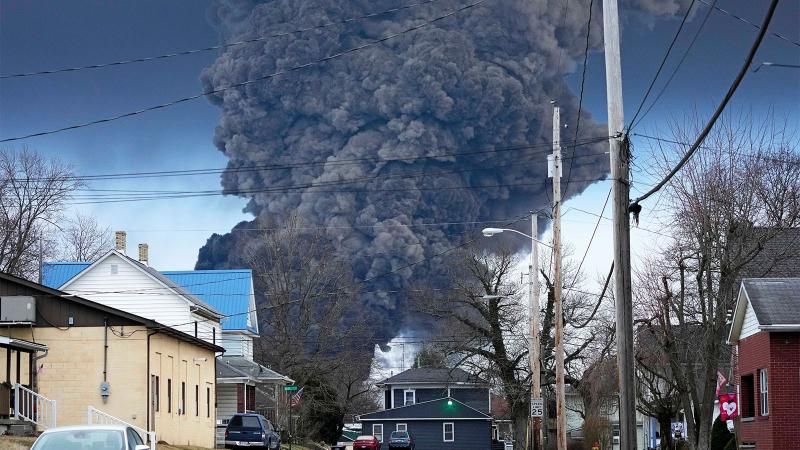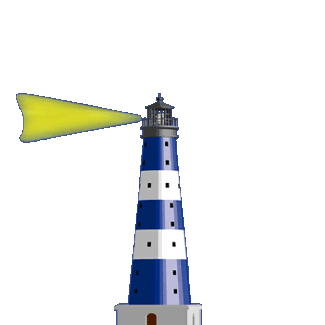Trains that derailed in Ohio weren't labeled as carrying toxic cargo
By: John McCracken (Grist)


Ohio Gov. Mike Dewine calls for Congress to look into legality of trains not labeled as potentially hazardous when carrying toxic chemicals.


Nearly two weeks after a train carrying hazardous chemicals derailed in rural Ohio, questions still linger about the lasting effects of the incident and the speed at which residents were returned to their homes.
Around 9 p.m. on February 3, a train operated by Norfolk Southern Railway derailed in East Palestine, Ohio, located on the border of Pennsylvania and roughly an hour from Pittsburgh.
Among the chemicals the freight was carrying, five cars contained vinyl chloride, a colorless gas that is linked to various cancers and is used in a variety of plastic products and manufacturing. In the initial days after the derailment, temperatures rose in the cars holding the vinyl chloride and officials at both the railroad company and the U.S. Environmental Protection Agency, or EPA, ordered that residents evacuate East Palestine.
Speaking at a press conference on Tuesday, Republican Governor Mike DeWine said he learned that the train cars were marked as non-hazardous, and thus officials weren't notified that the train would be crossing through the state.
Grist thanks its sponsors. Become one.
To support our nonprofit environmental journalism, please consider disabling your ad-blocker to allow ads on Grist. Here's How
The governor called on Congress to look into the regulations that would allow a train carrying multiple cars with hazardous substances to be labeled non-hazardous.
"Frankly, if this is true, this is absurd and we need to look at this," DeWine said. "We should know when we have trains carrying hazardous materials that are going through the state of Ohio."
DeWine also said that prior to the decision to release the chemicals, he was presented with "two bad options."
One was to do nothing and risk that a train car full of vinyl chloride would explode, which would have been "catastrophic," resulting in shrapnel flying out in a one-mile radius. The second option won, and officials conducted a controlled burn of the chemicals.
Skepticism over the decision to return residents back to their homes has grown since the initial burn. A local environmental group is calling on DeWine to declare an emergency to receive additional federal support.
Norfolk Southern spokesperson Connor Spielmaker said the decision to conduct a controlled burn was reached as a group, which echoed DeWine's recent update.
"Norfolk Southern hazardous material personnel were on-scene and coordinating with local first responders immediately following the derailment," Spielmaker told Grist.
According to the EPA, contaminated soil at the site was covered to rebuild the rail line.
The release of hazardous chemicals barrelling through rural Ohio late in the night have caused a variety of concerns. Residents have reported headaches, dizziness, and fevers since returning home on February 8 as they continue to conduct voluntary home air and water tests.
"We basically nuked a town with chemicals so we could get a railroad open," Sil Caggiano, a hazardous materials specialist, told WKBN.
The derailment did not result in any immediate human fatalities, but residents are now reporting deaths of pets, chickens, and foxes. Given the spill's proximity to the Ohio River Basin, which touches 14 states in the region, concerns of surrounding pollution have popped up in middle Tennessee, Kentucky, Cincinnati, Ohio, and West Virginia.
In addition to the vinyl chloride, various other chemicals were spilled, leading to concern for water, soil, and groundwater pollution.
According to the manifest of contents inside the railcars provided to the EPA from Norfolk Southern, undisclosed amounts of butyl acrylate, a hazardous chemical known to cause skin irritation that is used in plastic production, and propylene glycol, a generally non-toxic chemical used in food packaging, spilled during the derailment. Additionally, undisclosed amounts of ethylhexyl acrylate, a carcinogen linked to aquatic death, and petroleum spilled at the site.
On Tuesday, Ohio environmental regulators confirmed that butyl acrylate was found in nearby waterways and that the spill did make its way to the Ohio River.
Tiffani Kavalec, division chief of the Ohio Environmental Protection Agency, said the state agency is monitoring a moving plume of contaminants in the Ohio River. But, she said, there is no concern that the chemicals will make their way into drinking water systems connected to the Ohio River due to the size of the river and its ability to self-filter.
Closer to the derailment site, however, officials with the Ohio EPA and the state's Department of Public Health urged those on private drinking water to drink bottled water as agencies continue to monitor groundwater.
The Ohio Department of Natural Resources confirmed 3,500 dead fish in waterways as well as deceased hellbender salamanders, an endangered species in the state.
In a statement to Grist, Debra Shore, Ohio's regional administrator for the federal EPA, said the agency has issued a letter to the rail company that outlines Norfolk Southern's potential liability caused by the release of hazardous chemicals.



By posting to this seed, you are agreeing to abide by the Group's Rules .
Brakes were the problem here, right?
Questions:
Where was Pete Buttigieg?
Where is FEMA?
Has the EPA checked the water?
If this is true it makes no sense. The product is classified as hazmat (Hazardous, Flammable) by the DOT and requires placards from the shipper. There is specific instruction on how to load and unload this product.
The key word here is UNDISCLOSED
If the are talking about these chemical seperate from the vinyl chloride that would again fall on the shipper of the product and their libility will be enourmous.
Oh, boy, will it. And if any of that got into the water ways they will have to pay for the cost of the cleanup
I'm sure the railroad will pay .........
After they've been dragged thru court
The paragraph that stated other undisclosed hazmat is the key. This to my understanding was a general merchandise train and if shippers did not declare on their B/L with accompanying paperwork to the RR that it was hazmat they will be held responsible.
I don't know if it applies, but I found this earlier:
That is probably true, EG. But that does not negate their need for hazmat placards and notification from the shipper to the RR that there are haz mat materials in their shipment.
Of course the cars were labeled. That's how responders knew what cargo the cars were carrying. The DOT maintains a system for placarding rail cars, trucks, vehicles, and packages containing chemicals. The political fearmongering is based upon ignorance.
All this information is publicly available. Here's a link:
Here's a link to the Emergency Response Guidebook that explains the placards, hazard classes, and list of IDs for all the chemicals being commercially transported. (The link opens a PDF.)
Download a copy of the Emergency Response Guidebook and look for the placards. Then you'll know what is being transported, too.
This is an excellent article on the requirements for carrying haz mat, when it was implimented, the RRs fighting it and the passage and termination of said requirements.
Those regs used to apply to OTR trucks also. I used to have a DOT book that had all the placards and what they were for. There were regulations in it, too.
Electronically controlled braking is not economically feasible. They would have to retrofit every single railcar, whether it was carrying hazardous materials or not.
You can't selectively use such a system...it's all or nothing, be it air brakes, or electronic ones.
There is simply no way to quickly stop hundreds of tons of railcars and cargo once a derailment has begun.
There is too much mass in motion and energy to dissipate to keep additional cars from leaving the rails.
If NS is found at fault in this the cost to them will be extraordinarily high. They were also the RR that started the appeal to get the rule reversed.
No one said that hundreds of tons of RR cars could be quickly stopped.
The initial verdict was that a wheel bearing failed on one of the tank cars, per the NTSB. If you look at the RR performance over the past decade or two you'll see that the trains have gotten longer and heavier. They are running on lesser crews with limited time off (that was what the recent strike was about) and their profits are quite high.
Norfolk Southern's net rev in 2021 was a shade over $3 billion and an OR of 60.1.